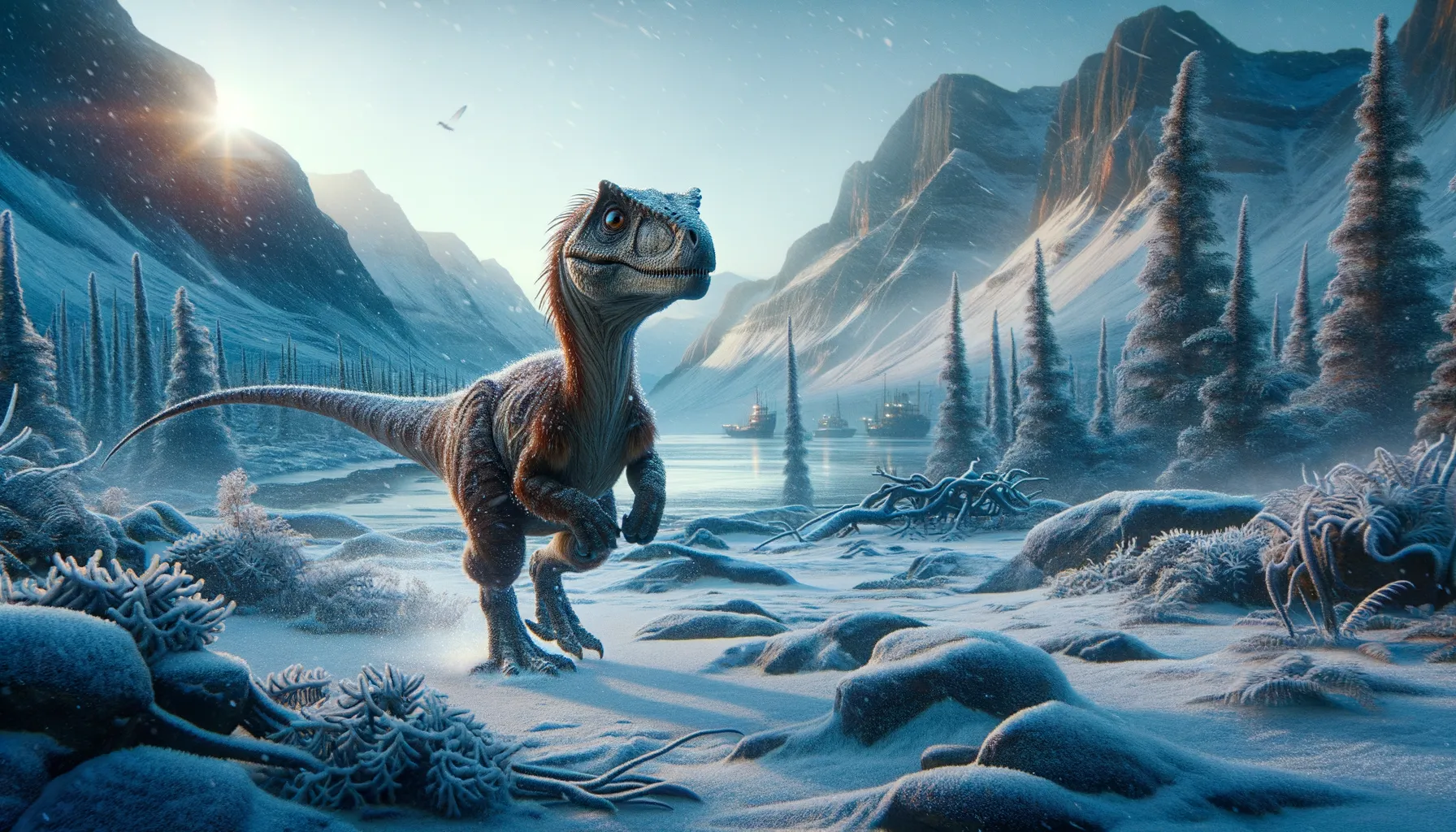
Leaellynasaura
Swift survivor of the ancient world.
Period
Cretaceous
Length
About 6.5 feet long.
Height
Roughly 2 feet tall.
Weight
Approximately 20-25 pounds.
Leaellynasaura was a small, bipedal dinosaur known for its large eyes. It lived during the early Cretaceous period in what is now Australia. It inhabited a cold, polar region, indicating it was well-adapted to harsh conditions. This dinosaur's ability to move rapidly suggests that it could effectively evade predators. The discovery of its fossils has provided a glimpse into dinosaur life in polar environments.
Diet
Leaellynasaura was a herbivore, primarily feeding on low-lying vegetation. Its diet likely consisted of ferns, cycads, and other plant material available in its environment.
Hunting
As a herbivore, Leaellynasaura did not hunt for prey. It spent its time foraging for food, using its agility to maneuver through dense vegetation.
Environmental challenges
Living near the South Pole, Leaellynasaura faced long, dark winters. It needed to survive in cold conditions with potentially limited food sources during these periods. Its large eyes suggest it might have adapted to see better in low-light conditions, helping it find food and avoid predators.
Speed
Moderate; agile for dodging predators.
Lifespan
Estimated at 10-20 years.
First discovery
Discovered in 1989 by Patricia Vickers-Rich.
Fun Facts
- Leaellynasaura was a small dinosaur that lived in Australia during the early Cretaceous period about 110 million years ago.
- This dinosaur was named after Leaellyn Rich, the daughter of two paleontologists who discovered its fossils.
- Leaellynasaura was a herbivore, meaning it primarily ate plants and possibly small leaves or ferns.
- It had large eyes, which might have helped it see well in the long winter darkness of polar Australia.
- The dinosaur measured only about 3 feet long, making it quite small compared to other dinosaurs.
- Leaellynasaura might have had a bushy or feathery tail, which could have been used for display or balance.
- Some scientists believe Leaellynasaura lived in small herds for protection against predators.
Growth and Development
Leaellynasaura grew quickly in its early years, reaching maturity relatively fast. This rapid growth helped it evade predators by quickly attaining a size less vulnerable to attacks. Its development included adaptations to survive its harsh environment, evidenced by possible warm-blooded traits.
Habitat
Leaellynasaura lived in forested environments near the polar regions of ancient Australia. The habitat was characterized by a mix of conifers and other cold-tolerant plants. It experienced extreme seasonal changes, including periods of continuous darkness.
Interaction with other species
Leaellynasaura coexisted with other small dinosaurs and fauna in its environment. It likely formed herds or social groups for protection against predators. Its diet could have overlapped with other herbivores, resulting in some competition for food.
Natural lifespan
Its natural lifespan was likely 10 to 20 years.
Reproduction
Leaellynasaura likely laid eggs, with nests possibly built in sheltered areas to protect from predators and cold. Parental care might have been involved in nurturing the young and protecting them.
Social behaviour
Leaellynasaura is believed to have been social, forming herds or small groups. Such behavior provided safety in numbers, reducing individual risk from predators. Social interactions might have included cooperative foraging and nesting behaviors.
Fossil locations
Fossils of Leaellynasaura have been found in the Albian strata of Australia. Their discovery in the Dinosaur Cove region has offered insights into how some dinosaurs adapted to polar environments. These locations have been crucial in understanding the diversity of dinosaur life during the Cretaceous period.
